In three new papers released this week, scientists analyzed data from NASA’s InSight lander to reveal the structure of Mars and its layers, revealing information about the planet’s crust, lithosphere, mantle, and core. Plus, isotopes in an exoplanet’s atmosphere, a potential exomoon being formed, the heart of a radio galaxy, and black holes impeding stellar birth.
Podcast
Transcript
Hello and welcome to the Daily Space. I am your host Dr. Pamela Gay, and I am here to put science in your brain.
Our first story is one that demonstrates yet again that science is as much about creativity as it is about careful work and following the scientific method.

A new paper in Nature Geoscience points out that underwater landslides can be caused when massive icebergs run aground or otherwise hit or scrape outcrops in the seafloor. There are other triggers as well, but in this new era of melting sea ice and fragmenting ice shelves, this new piece of knowledge points to a potentially hazardous future.
At the extreme end, undersea landslides can cause large volumes of water to suddenly become displaced and send a massive tsunami through the sea. While less extreme, these events can also destroy rare and sensitive ecosystems and damage undersea cables.
This discovery was made almost by accident. Researcher Alex Normandeau was on a research trip through Bouffin Islands Southwind Fjord and snapped a bunch of photos of a random iceberg. The trip was actually to look for landslides, and while none were observed during the trip, it was noted on a return trip that one had occurred shortly after that initial voyage, and it was located near features that looked like the scrapping of an iceberg running aground. Using satellite data from Sentinel-2, the research team realized that the original, random iceberg was the trigger of that new landslide.
And now, every iceberg, we realize, is a danger to both the things on, in, and above the water. The more you know?
A while back, it was realized that Venus likely had a rather Earth-like environment for a while and then for unknown reasons, became the acidic, furnace of destruction it is today. The fact that we don’t know why is something that would keep me awake at night if there weren’t for all the other things keeping me awake at night.
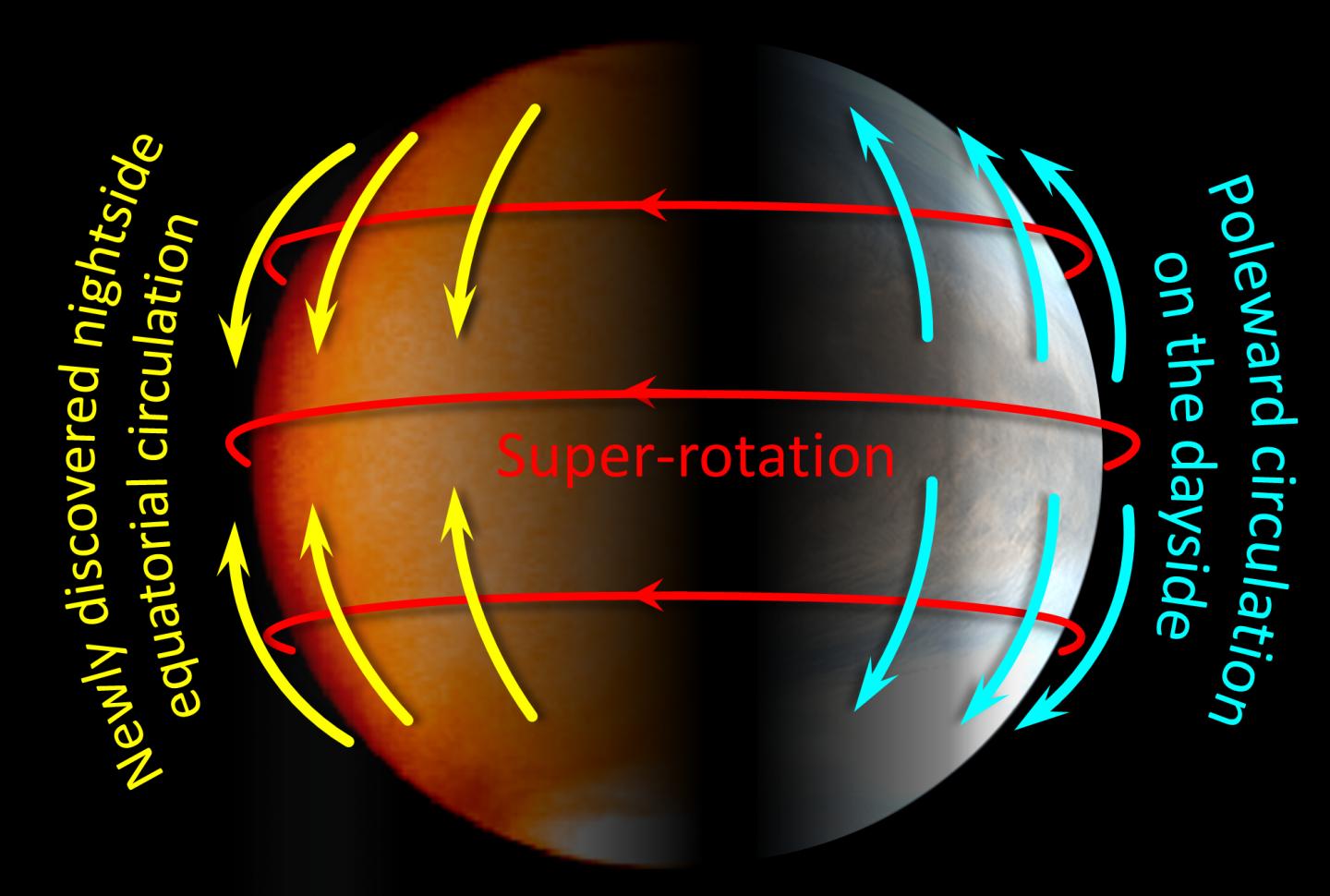
Venus’ atmosphere has a weather pattern called super-rotation that causes cloud patterns to move so fast east-to-west that nighttime infrared imaging, something we do on the regular here at Earth, couldn’t be done without implementing special data reduction techniques that allowed researchers to digitally track their images with the atmospheric motion and stack images. Once that super-rotation was accounted for in image analysis, infrared data of the nighttime side of Venus showed additional massive winds. This data came from Japan’s Akatsuki orbiter, and team member Imamura explains: We are finally able to observe the north-south winds, known as meridional circulation, at night. What’s surprising is that these run in the opposite direction to their daytime counterparts. Such a dramatic change cannot occur without significant consequences. This observation could help us build more accurate models of the Venusian weather system which will hopefully resolve some long-standing, unanswered questions about Venusian weather and probably Earth weather too.
I’m really hoping that in understanding Earth better, we don’t discover that super-rotation is in our future. There are some things we just don’t need to experience for ourselves.
And now, for something entirely different.
The Asteroid Terrestrial-impact Last Alert System, or ATLAS, has so far not found anything looking to hit Earth and destroy life, a fact I am grateful for. It has, however, found a lot of comets. One of these Comet ATLASes, the comet C/2019 Y4 (ATLAS), promised us a great celestial show, and then fell apart instead. Literally. The main body of the comet, which appears as the round head from which the tail expands back, shattered, and the debris was left as an orbiting mess; a mess that just happened to orbit right into the path of ESA’s Solar Orbiter.
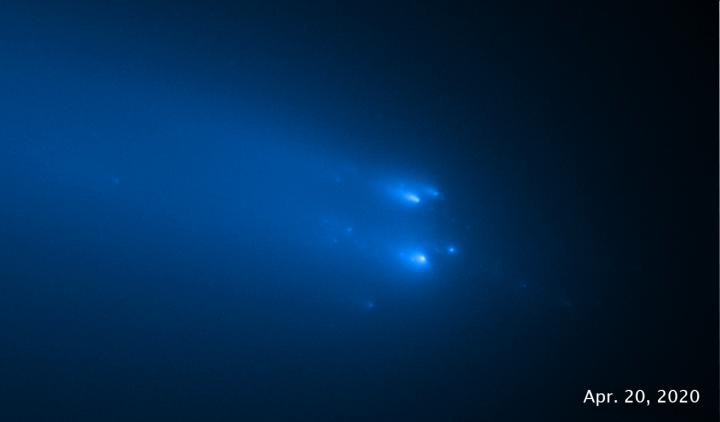
The instruments on this mission allowed researchers to determine that cometary fragments reshape the Sun’s magnetic field. Essentially, the magnetic field drapes itself around the fragments, helping to shape the comet’s ion tails. Project lead, Lorenzo Matteini explains: This is quite a unique event and an exciting opportunity for us to study the makeup and structure of comet tails in unprecedented detail. Hopefully, with the Parker Solar Probe and Solar Orbiter now orbiting the Sun closer than ever before, these events may become much more common in [the] future!
Yes, folks, he is hoping for more comets to self-destruct in the inner solar system and get close to solar probes. Science is weird. It is also wonderful.
It has been an exciting week in the world of space science, with some revolutionary stories being published. Next up, we look at the results from three separate papers released this week in the journal Science on the structure of Mars. The teams involved analyzed data from NASA’s InSight lander. Remember how we told you about how InSight’s seismometer detected hundreds of marsquakes? Similar to how we used earthquakes to understand the internal structure of Earth, these teams did the same for Mars.
First, scientists had to work based on the assumption that Mars might be similar to Earth, with a series of layers: the crust, the mantle, and the core. It’s a little more complicated than that, but it’s a good, basic starting point for understanding a planet’s structure. And as lead author Amir Khan explains: Now seismic data has confirmed that Mars presumably was once completely molten before dividing into the crust, mantle, and core we see today, but that these are different from Earth’s.”
Let’s start at the surface and work our way in. The crust under InSight, which is near the Martian equator, is between 15 and 47 kilometers thick, which is relatively thin compared to Earth where the crust can be up to 70 kilometers thick. It also means that the chemical composition of the rocks may be more radioactive than those here on Earth.
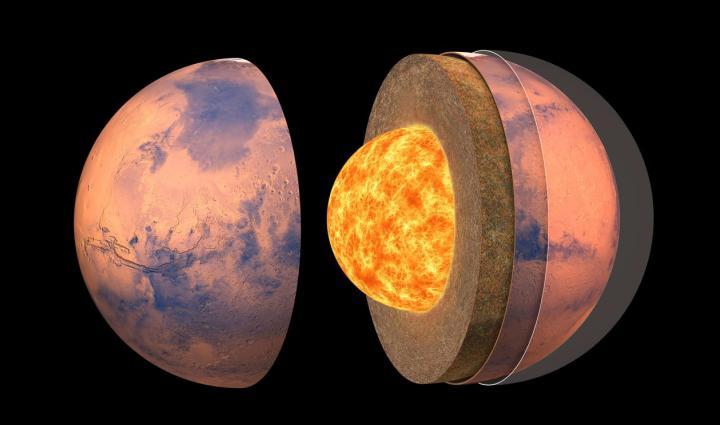
Under the crust is Mars’ mantle. Here’s where it got a bit interesting. Like Earth, Mars has a lithosphere at the top of its more plastic mantle. That lithosphere is twice as thick as that on Earth, ranging from 400 to 600 kilometers deep. Unlike Earth, Mars appears to only have one continental plate as opposed to Earth’s seven large ones and numerous smaller ones. This structure could explain why we don’t see signs of plate tectonics on Mars.
As for the composition of the mantle, the Martian mantle is similar to Earth’s upper mantle although it does seem to contain more iron.
Finally, we come to the core. No, not that terrible disaster movie from 2003, but the innermost layer of a planet. Researchers were able to use the seismic waves detected by InSight to calculate the size of the core, and per the press release: The Martian core has a radius of about 1,840 kilometers, making it a good 200 kilometers larger than had been assumed 15 years ago when the InSight mission was planned.
Co-author Simon Stähler goes on to explain: If the core radius is large, the density of the core must be relatively low. That means the core must contain a large proportion of lighter elements in addition to iron and nickel.
So within Mars’ core are lighter elements like sulfur, oxygen, carbon, and nitrogen. But that core is still liquid as researchers expected, which is a bit surprising given that Mars doesn’t have a magnetic field anymore.
InSight has done some amazing work, despite the failure of its drill. And we’re pretty sure there is more to come, which we will continue to bring you here on the Daily Space.
You never know what data is going to surprisingly teach you new things. In a recent study of the atmosphere of the exoplanet TYC 8998-760-1 b, researchers were able to learn about the planet’s history from the kinds of atoms in its atmosphere. Or, more to the point, from the kinds of carbon atoms in its atmosphere.

Carbon is a pretty stable atom that has six protons and usually has six neutrons in its core. Sometimes, however, it can end up with seven neutrons and become carbon-13; and to the joy and usefulness of archeologists and paleontologists, it can sometimes end up with eight neutrons and become the ever unstable carbon-14 that is used for radiocarbon dating.
In looking at the atmosphere of this boringly named alien world, researchers expected to find about 1 in 70 carbon atoms would be carbon-13, but instead, they found 1 in 35 atoms were carbon-13! Researchers explain in a new paper appearing in the journal Nature and led by Yapeng Zhang that they believe this difference may be due to the planet’s extreme distance from its sun. Co-author Paul Molliere explains: The planet is more than one hundred and fifty times further away from its parent star than our Earth is from our Sun. At such a great distance, ices have possibly formed with more carbon-13, causing the higher fraction of this isotope in the planet’s atmosphere today.
This is, admittedly, a sample of one. We’re going to need to study a lot more planetary atmospheres to know if this is the norm or just one more weird world in a universe that refuses to be normal.
Also on the exoplanet front, new observations published in The Astrophysical Journal Letters show that there is a potential exomoon forming around an exoplanet. And we have images!
Using the Atacama Large Millimeter/submillimeter Array (ALMA), scientists detected a circumplanetary disk around exoplanet PDS 70c, which is a Jupiter-like planet orbiting a star about 400 light-years away. This disk surrounds the planet, similar to how protoplanetary disks surround a star, and it’s full of dust that could be turned into a moon. An exomoon. And we have managed to get a picture of that disk. What a time to be alive, people.
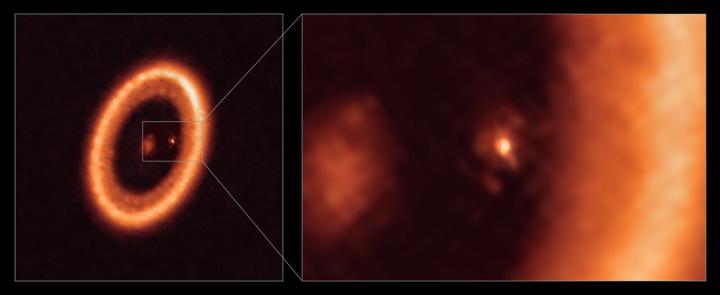
Here’s what we basically know of planetary formation. The details get murky, so this is simply an upper-level understanding. A star forms and is surrounded by a circumstellar disk full of dust. That dust can then coalesce into planets, which will pull more and more dust and debris into them and grow as they collect material. Not all of the dust ends up in the planet but can turn into a circumplanetary disk of dust that now orbits the planet and could similarly coalesce into a moon or three. Lead author Myriam Benisty commented: Our ALMA observations were obtained at such exquisite resolution that we could clearly identify that the disk is associated with the planet and we are able to constrain its size for the first time.
The diameter of this moon-forming disk is comparable to that of the Sun-to-Earth distance and contains enough mass to form no more than three satellites the size of our own Moon.
Now, there is another Jupiter-like planet called PDS 70b in the system. That could mean that 70c starved its neighbor of dust while they were being born. Not very nice, but we could be wrong, with further observations from the upcoming Extremely Large Telescope giving us even more information about this system.
From planets, we now jump to planet-sized telescopes. The Event Horizon Telescope has released new super-high-resolution images, this time of the inner details of the galaxy Centaurus A’s jets. The Event Horizon Telescope is a collaboration of radio telescopes all across the globe that work together to observe targets of interest. This collaboration has previously shown us the twisted light that is warped around M87’s central black hole. Now they look out a bit further from the center of a different system.
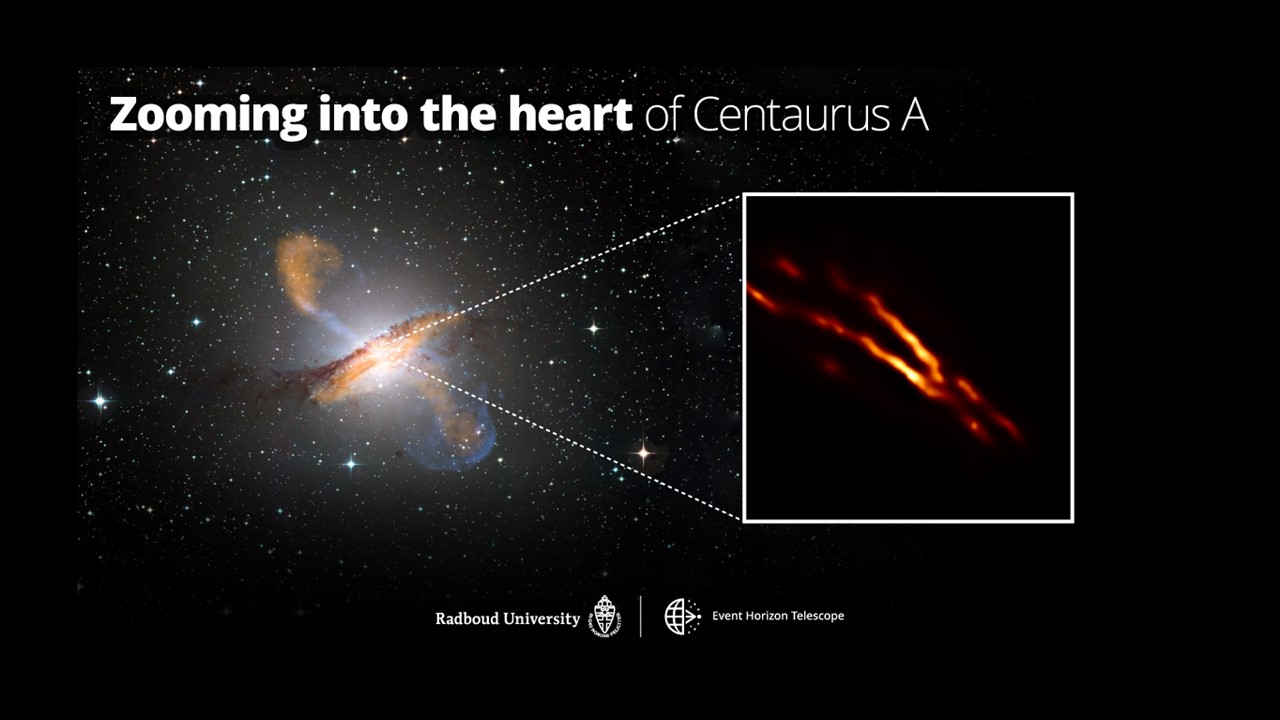
Centaurus A is an active galaxy. This means material – dust, gas, stars, planets – have been driven into the galaxy’s center by some sort of a collision or similar, and as they spiral into toward the galaxy’s central black hole, things get denser, heat up, and essentially form an electromagnet that sends jets of particles out the north and the south magnetic poles of the galaxy. We can see these jets extending hundreds of thousands of light-years in radio, and deep images from scopes like Hubble show features down to hundreds of light-years. And now, we can see details smaller than one light-day across.
To put this in perspective, I’m going to quote from the press release: With the resolving power of the EHT, we can now link the vast scales of the source, which are as big as 16 times the angular diameter of the Moon on the sky, to their origin near the black hole in a region of merely the width of an apple on the Moon when projected on the sky. That is a magnification factor of one billion.
What shocked me, and apparently also the research team, is that the jets have this odd illumination of the edges only, and this is consistent with the jets being cones of particles that are easiest to see at the edges. We’ve seen this to a lesser degree in other systems, but as collaborator Sera Markoff states: We found it challenging to explain with the same models we used for M87. Something different must be happening, like helical magnetic fields, which gives us new clues about how they may ‘squeeze’ the jets.
This data intriguingly points to the exact location of Centaurus A’s central black hole, and the research team thinks that future observations will be able to add in this central detail. The only thing slowing them down is the need to extend their network to space. Sometimes, an Earth-sized telescope just isn’t big enough. There are currently numerous plans to seek funding to build both orbiting and lunar telescopes, and I’m hoping we are less than a generation away from mapping the core of this active galaxy.
Until then, this has been the Daily Space.
Learn More
Icebergs Can Trigger Underwater Landslides
- An Iceberg May Have Initiated a Submarine Landslide (Eos)
- “Submarine landslides triggered by iceberg collision with the seafloor,” Alexandre Normandeau et al., 2021 June 24, Nature Geoscience
Venus Makes Nighttime Weather Hard to Measure with Super-Rotation
- JAXA press release
- The University of Tokyo press release
- “The nightside cloud-top circulation of the atmosphere of Venus,” Kiichi Fukuya et al., 2021 July 21, Nature
The Comet That Lost Its Head
- NAM 2021 press release
Marsquakes Reveal Planetary Core
- CNRS press release
- ETH Zürich press release
- IPGP press release
- University of Cologne press release
- NASA InSight Lander’s seismic observations reveal the interior of mars (EurekAlert)
- “Seismic detection of the martian core,” Simon C. Stähler et al., 2021 July 23, Science
- “Thickness and structure of the martian crust from InSight seismic data,” Brigitte Knapmeyer-Endrun et al., 2021 July 23, Science
- “Upper mantle structure of Mars from InSight seismic data,” Amir Khan et al., 2021 July 23, Science
Got Carbon? Alien World Has Unusual Carbon Ratios in Atmosphere
- MPIA press release
- NOVA press release
- “The 13CO-rich atmosphere of a young accreting super-Jupiter,” Yapeng Zhang et al., 2021 July 14, Nature
Moon Formation Spotted for First Time!
- Center for Astrophysics press release
- ESO press release
- “A Circumplanetary Disk around PDS70c,” Myriam Benisty et al., 2021 July 22, The Astrophysical Journal Letters
Event Horizon Telescope Zooms in on Galactic Jets
- NOVA press release
- “Event Horizon Telescope observations of the jet launching and collimation in Centaurus A,” Michael Janssen et al., 2021 July 19, Nature Astronomy
Credits
Written by Pamela Gay and Beth Johnson
Hosted by Pamela Gay
Audio and Video Editing by Ally Pelphrey
Content Editing by Beth Johnson
Intro and Outro music by Kevin MacLeod, https://incompetech.com/music/


 We record most shows live, on Twitch. Follow us today to get alerts when we go live.
We record most shows live, on Twitch. Follow us today to get alerts when we go live.